Studio Job interprets famous buildings with "whacked and expressive" Landmark series
Design Miami 2014: Studio Job has unveiled a series of monumental furniture pieces inspired by architectural landmarks for Carpenters Workshop Gallery (+ interview).
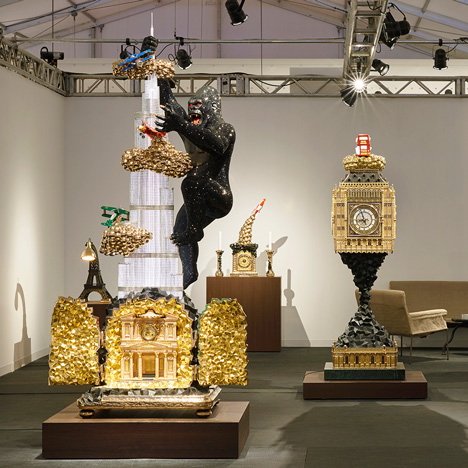
The huge sculptural objects, made of materials including bronze, cast aluminium, marble and gold leaf, reference iconic buildings including the Eiffel Tower, Big Ben and the Burj Khalifa.
Job Smeets and Nynke Tynagel of Studio Job have mounted a lampshade atop the Eiffel Tower to make a light, placed Chartres cathedral on its side to make a cupboard and turned the Taj Mahal upside down to create a table.
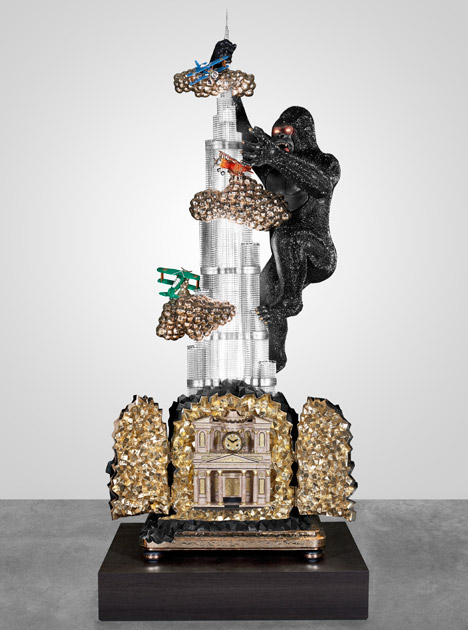
Called Landmark, the series consists of five large pieces plus the tabletop Eiffel Tower light and a mantelpiece clock called Time Bomb that is topped by a rocket and flanked by candlesticks.
The largest piece features a crystal-covered gorilla climbing a cast-aluminium replica of Dubai's Burj Khalifa – the world's tallest building – while aeroplanes decorated with Islamic symbols buzz around it. The entire assembly sits atop a bronze-doored alcove containing a marble likeness of a rock-cut temple from Petra, which doubles as a clock.
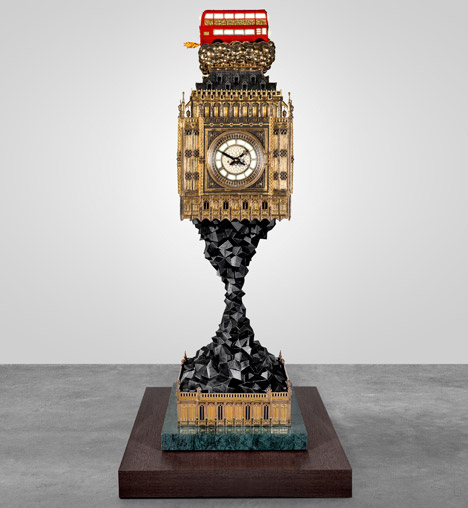
"It's like a contemporary version of applied art of the Renaissance," said Job Smeets, who said the "totally whacked and totally expressive" pieces referenced the contemporary world but did not have overt political messages.
"Obviously, architecture communicates very well and says a lot about the situations in countries: the inter-human situation, welfare, politics. But in the end we've just tried to make a nice clock and a nice lamp."
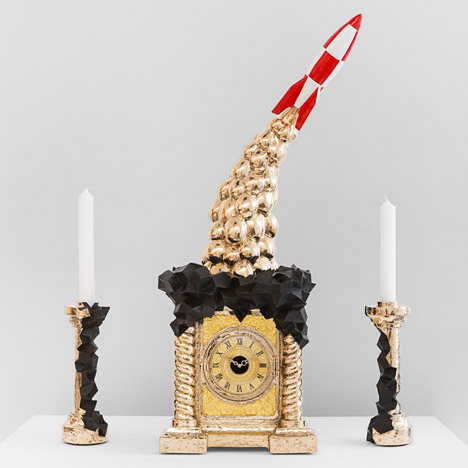
Another piece, called Big Ben Aftermath, features the famous London clock tower that appears to be disintegrating, and is topped by an exploding London bus.
Dezeen Book of Interviews: Job Smeets features in our new book, which is on sale now
Speaking to Dezeen at the collectors fair in Miami this week, Smeets and Tynagel compared their work to the elaborate applied art of the Renaissance.
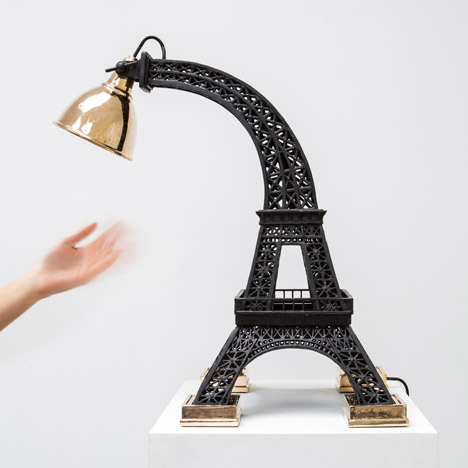
"I mean, obviously, this body of work does not come from Modernism," said Smeets. The gorilla climbing the Burj Khalifa is covered in 120,000 hand-applied crystals, Smeets added. "It took us six weeks with four people."
Images courtesy of Carpenters Workshop Gallery.
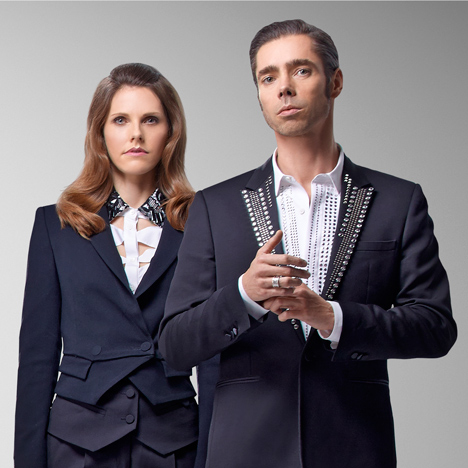
Read on for a transcript of the interview with Smeets and Tynagel conducted at the Carpenters Workshop Stand at Design Miami:
Marcus Fairs: Tell us about this collection you're showing here at Design Miami.
Job Smeets: I mean, obviously, this body of work does not come from Modernism. It’s like a contemporary version of applied art of the Renaissance; 16th century applied art. And you see all the important landmarks, like Big Ben, La Tour Eiffel, Chartres cathedral, Burj Khalifa, Petra and the Taj Mahal. And we played with those pieces.
Obviously, architecture communicates very well and says a lot about the situations in countries: the inter-human situation, welfare, politics. So through architecture we try to express not what we feel or what we think, but…
Nynke Tynagel: What's happening.
Job Smeets: Whatever is happening. But in the end we just try to make a nice clock and a nice lamp.
Nynke Tynagel: Because in design the skill is a little bit smaller than in architecture. We are able to flip them upside down, or flip them on their side, so we can play with it so it becomes a table or a cabinet.
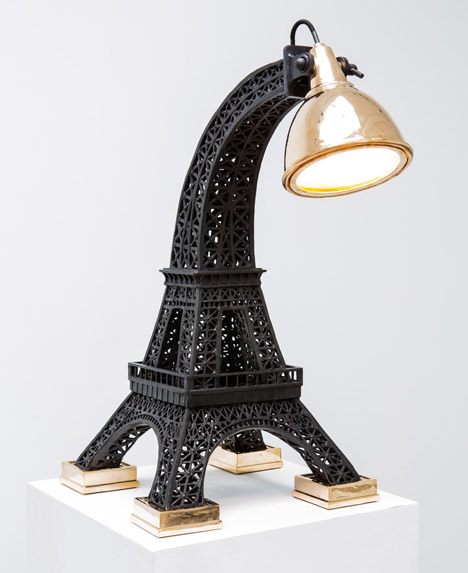
Marcus Fairs: Will you ever do real architecture? Are you interested in working at that kind of scale?
Nynke Tynagel: It's just a matter of scale.
Job Smeets: And it's just a matter of someone commissioning us with a building.
Marcus Fairs: Would you be okay with it being a building rather than a sculpture - something that has a function?
Job Smeets: I think in the end architecture can be quite tragic because it has so much functionality. But if you, for instance, look at the cities of Dubai or Abu Dhabi or New York even, the facades of the buildings can be very extreme, while inside it can be a very dull, functioning building.
Nynke Tynagel: And it must be a little bit frustrating that it takes so much time. We can move onto another idea quicker than in architecture.
Job Smeets: Architecture is so much about politics. You wouldn't believe it!
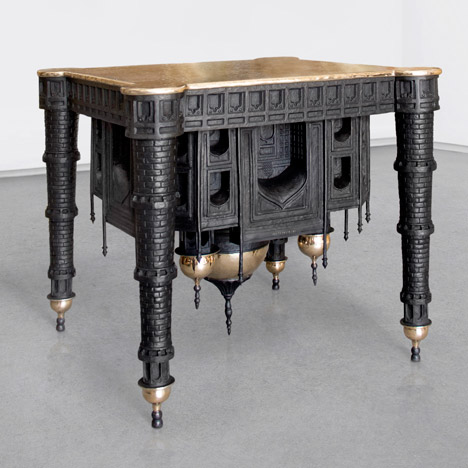
Marcus Fairs: I imagine these pieces would probably last longer than most buildings as well. Most contemporary buildings anyway.
Job Smeets: It's also a little bit the concept behind applied art. Also if you go back to the 16th century and I mention Green Vault [the Grünes Gewölbe museum]. It's the most important, most beautiful collection of applied art. Commissioned by Augustus the Strong. These pieces are still existing today and are still in top condition because they are so precious.
Nynke Tynagel: Crazy ideas.
Job Smeets: Amazing pieces!
Nynke Tynagel: Very detailed.
Job Smeets: Now we often say "oh, it's just craft". That's not true. If you look at the intrinsic value of the pieces you will see that they are, like, totally whacked and totally expressive. And also that… and even you could say that we also lost a lot in design in the past hundred years.
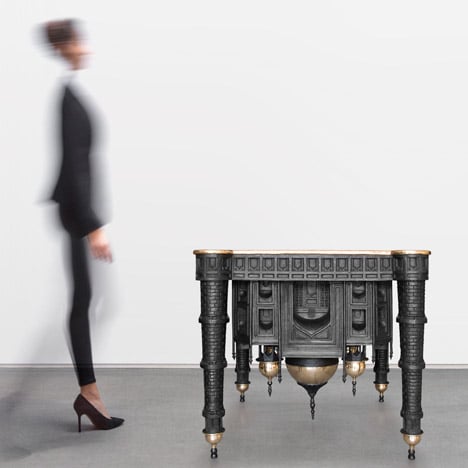
Marcus Fairs: In what sense?
Job Smeets: In an expressive sense. I mean, Modernism, of course, was very important for the welfare of a large group of people, because it made it possible that everyone can have a chair or everyone can have a table. Having said that, it transferred itself also into some kind of hyper-commercial style.
Nynke Tynagel: Losing details is also about losing personality, I guess.
Job Smeets: Oh! That's a good point!
Marcus Fairs: And do you have an idea of where you sit as applied artists - or whatever it is you want to call yourselves - in that kind of history? You're talking about 16th century, you're talking about Modernism. Where do you fit in?
Job Smeets: The whole thing. Because we also do furniture, we also do wallpaper… I mean, I think we just dig deeper than just last hundred years y'know? We try to use the whole history of design as possible inspiration.
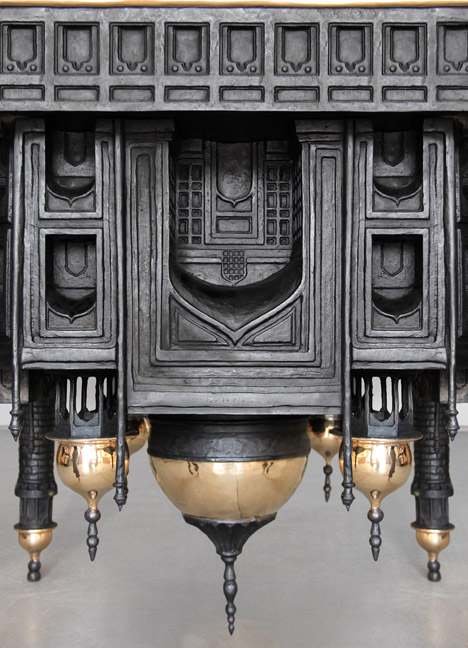
Marcus Fairs: And tell us about the process of creating these pieces, because they're pretty substantial, aren't they? There's a lot of real quality materials and craftsmanship. So how do you start? Do you sketch, or do you make a collage? Tell us the process.
Job Smeets: I make a sketch - five minutes. And then we start drawing the piece at 1:1 scale in our atelier.
Nynke Tynagel: We do a drawing of the piece also on computer.
Job Smeets: Also on computer, yes. Sometimes Nynke takes my sketch and translates it into…
Nynke Tynagel: A big question mark, and a big "what does he mean?!"
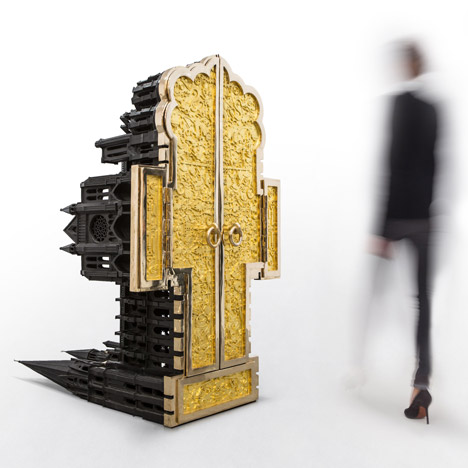
Job Smeets: And translates it into a digital drawing…
Nynke Tynagel: On the right scale, the right proportions, and the details, so the atelier knows what to do.
Job Smeets: And also sometimes it goes straight to the atelier and they pump it up – literally – because my sketches are always tiny.
Marcus Fairs: And the atelier is your atelier, or do you work with special bronze casting workshops and so on?
Job Smeets: Of course we work with bronze casters because you cannot cast bronze with one atelier. That's crazy. But we have an atelier of about 25 people who are really specialist artists and artisans and all the polishing, all the gilding, all the patenting all the assembling, all the hand painting, all the crystals we all do ourselves. I mean you can ask Swarovski to apply the crystals, but you'll end up with a much less interesting sculpture.
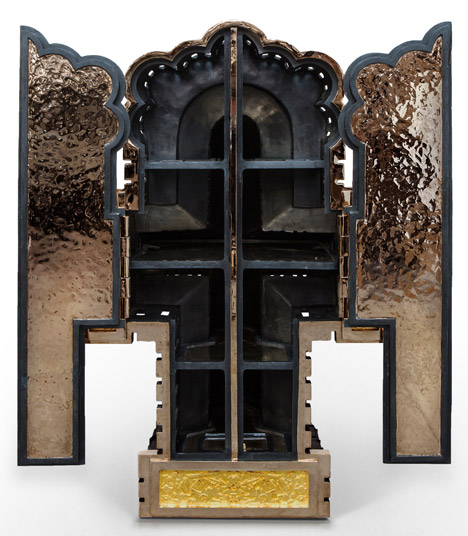
Nynke Tynagel: Now we are totally in control because it's all in-house.
Job Smeets: 120,000 crystals. It took us six weeks with four people.
Marcus Fairs: So taking this piece for example, with King Kong climbing the Burj Khalifa. What is it made of?
Job Smeets: The base is bronze: patinated bronze, gilded bronze, and polished bronze. The Petra church is full marble on bronze, so it's hand-painted marble and gilded bronze.
The Burj Khalifa tower is cast aluminium, which is then silver leafed by hand.
Marcus Fairs: By hand?
Job Smeets: Yes. The King Kong is aluminium because otherwise it would be much too heavy. And the planes are bronze, and the clouds are bronze.
Nynke Tynagel: There are many techniques in one sculpture.
Marcus Fairs: And how much is this one?
Job Smeets: How much does it cost? 500,000 or something like that.
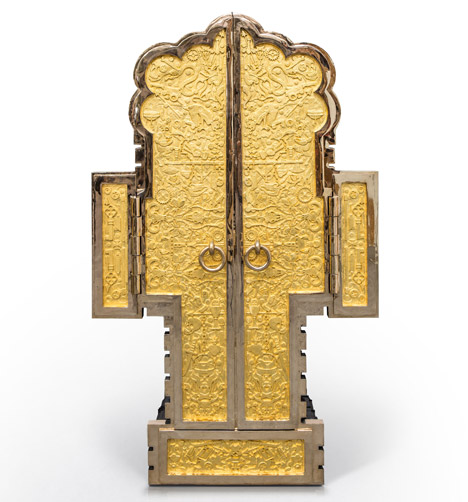
Marcus Fairs: Dollars?
Job Smeets: Yes, $520,000 or $540,000.
Marcus Fairs: And who do you make them for? Do you have a kind of client in mind - a collector?
Job Smeets and Nynke Tynagel: Not really. No.
Marcus Fairs: You make them just because you want to?
Job Smeets: Yes.
Marcus Fairs: So what's the motivation then to do this series of pieces?
Job Smeets: Our love of references. I mean, the King Kong movie was, of course, 1933. At that time the Empire State was the highest building in the world. New York was the most innovative city in the world and not even a hundred years later the highest building in the world is in Dubai. So we position the typical US icon – namely King Kong – on a Middle Eastern building.
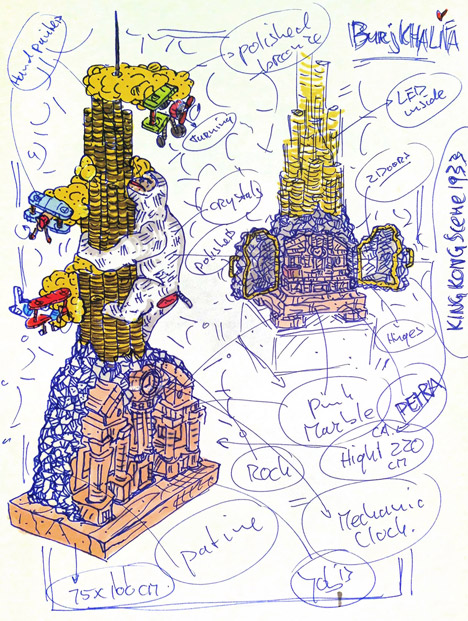
Marcus Fairs: So is there a message in this piece? Or it's just a collage?
Job Smeets: There can be a message, yes. But in the end it's just a lamp and a clock.
Nynke Tynagel: And it's like a totem of different messages.
Job Smeets: I mean, what happens if you let aeroplanes with Islamic signs fly over a building of the new capitalism?
Nynke Tynagel: Sometimes if you play with icons and you put them together randomly a new story exists. It’s also what we do in our graphics. So sometimes it's by coincidence; sometimes it's on purpose.
Marcus Fairs: So this piece is a lot more political that I imagined when I first looked at it.
Job Smeets: I don't know if it's political. It might be linked to society a little bit more than you can imagine. Same with the Big Ben, of course. That piece is crumbling and it has an exploding lamp on top. I mean it's like Europe in stress. But in the end it's just a clock.